Free video consultation | Monday 24 November
The next session will be on
Monday 24 November 2025
With Dr. Martin Wiese
Book a free video consultation with one of our surgeons, to discuss your symptoms, explore treatment options, and receive expert advice, all from the comfort of your home.
The Mayo repair explained
Developed in the late 19th century by Dr. William J. Mayo (1861-1939), an American surgical pioneer and co-founder of the Mayo Clinic, the Mayo Repair technique remains highly regarded for its effectiveness and reliability in treating umbilical hernias. When carried out by an experienced surgeon, it offers excellent success rates, avoids the use of plastic mesh, and minimises both complications and recovery time. Importantly, this technique is particularly effective for selected patients, especially those who are generally fit and have a hernia opening diameter less of than 20mm.
Criteria for umbilical hernias
- The hernia size must be small enough to ensure a safe, effective repair without mesh (<15mm neck of hernia)
- The patient should be of healthy weight to minimise strain on the repair.
- The hernia should not be causing severe complications or have been left untreated for too long.
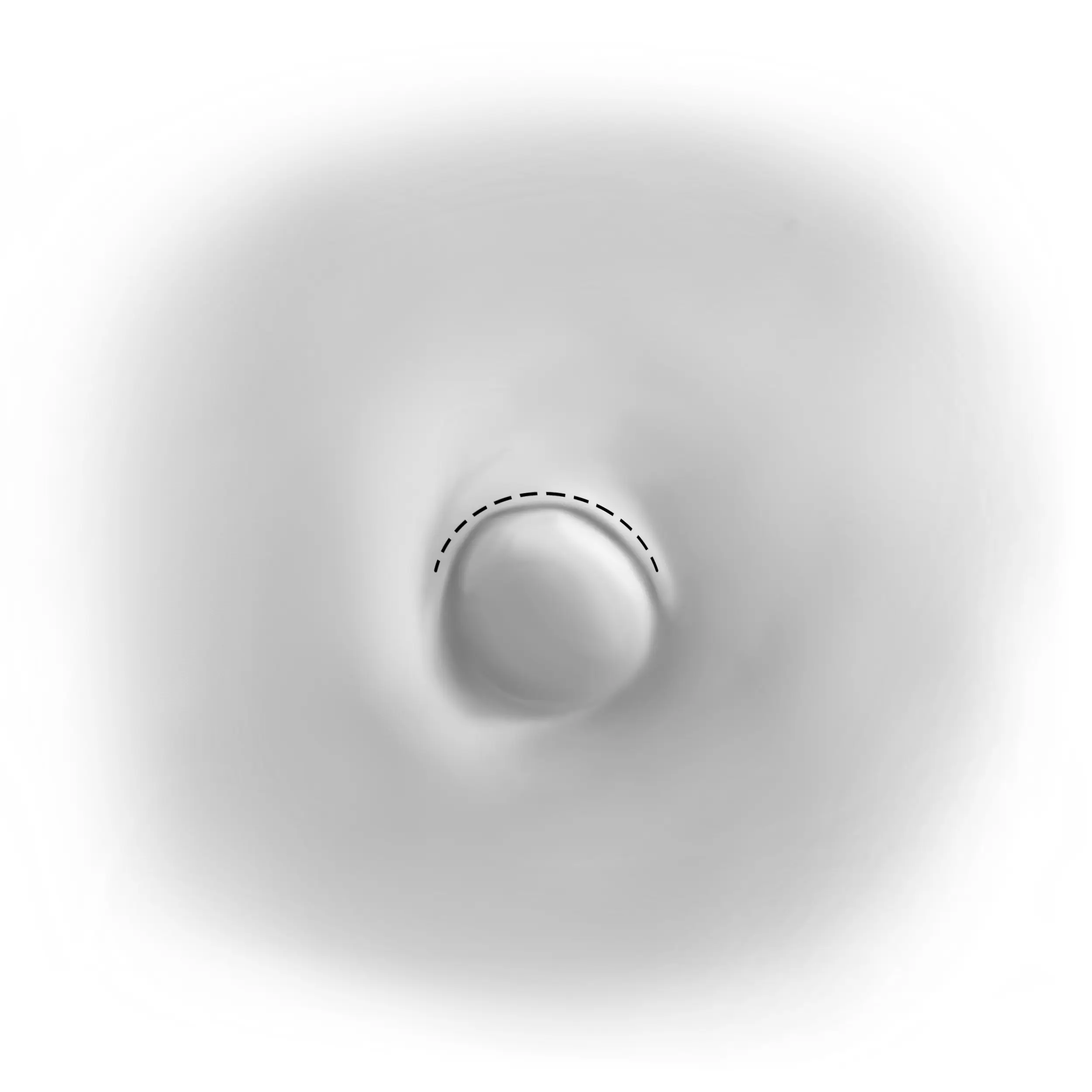
Starting your repair
We begin the repair of the umbilical hernia by administering a general anesthetic, followed by a small curved incision normally just above the belly button. While this is the preferred location for the incision, it can also be made below the belly button if needed. Once the incision is made, the hernia sac is exposed, allowing for the next steps of the repair process.
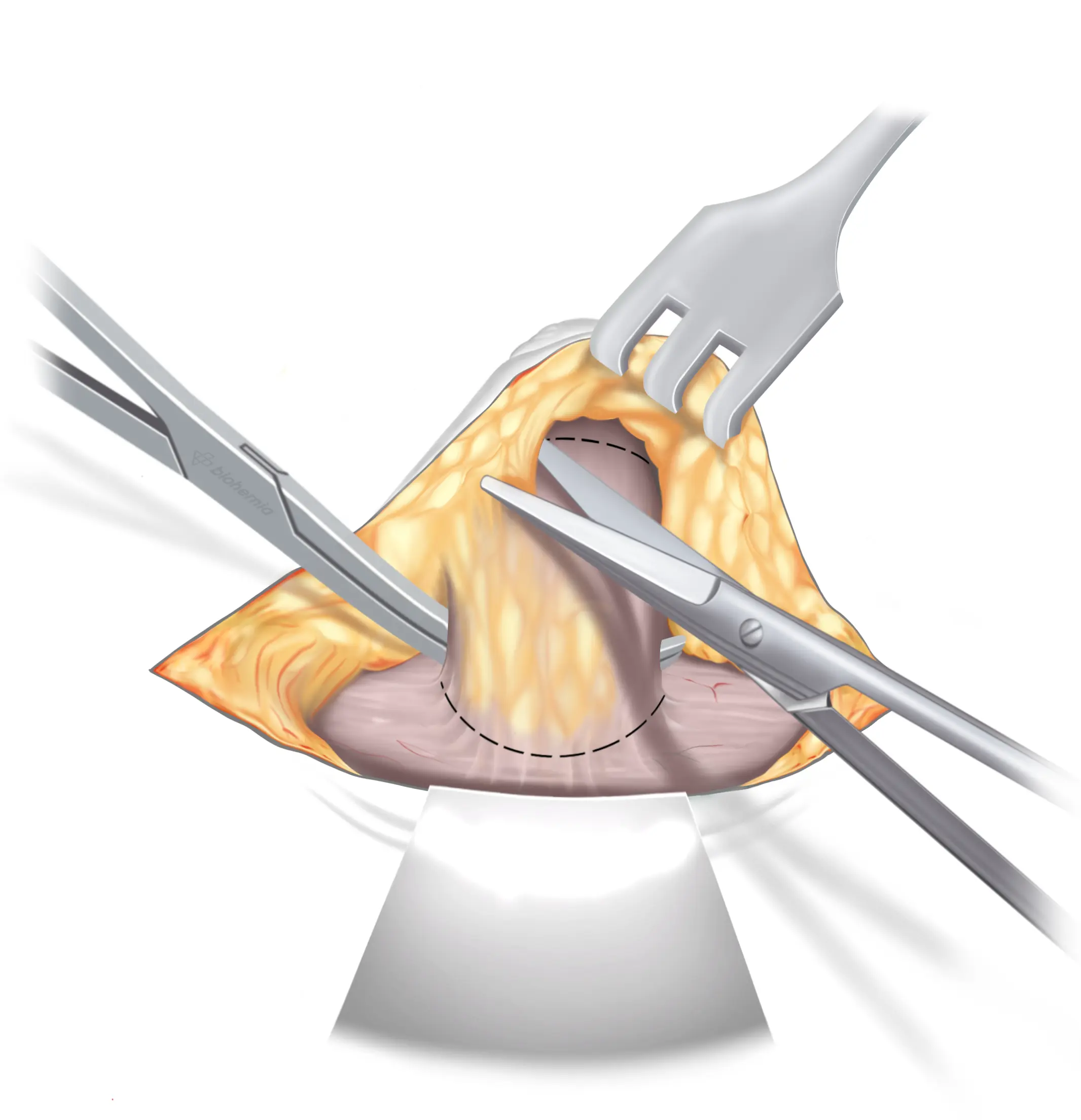
Abdominal fascia tissue
Subcutaneous fat
Umbilical hernia sac
Umbilicus
Isolating the hernia sac
The hernia sac ↓ is carefully separated from the surrounding fatty tissue and an instrument is used to create space around the sac to set it apart it from other abdominal tissues. Next, the sac is divided away from the belly button and also divided at its base to separate it from the abdominal fascia tissue ↓.
DETAILED EXPLANATION
Dissection of the sac, bypassing of the neck of the sac at facial level to free it from adhesing fatty tissue
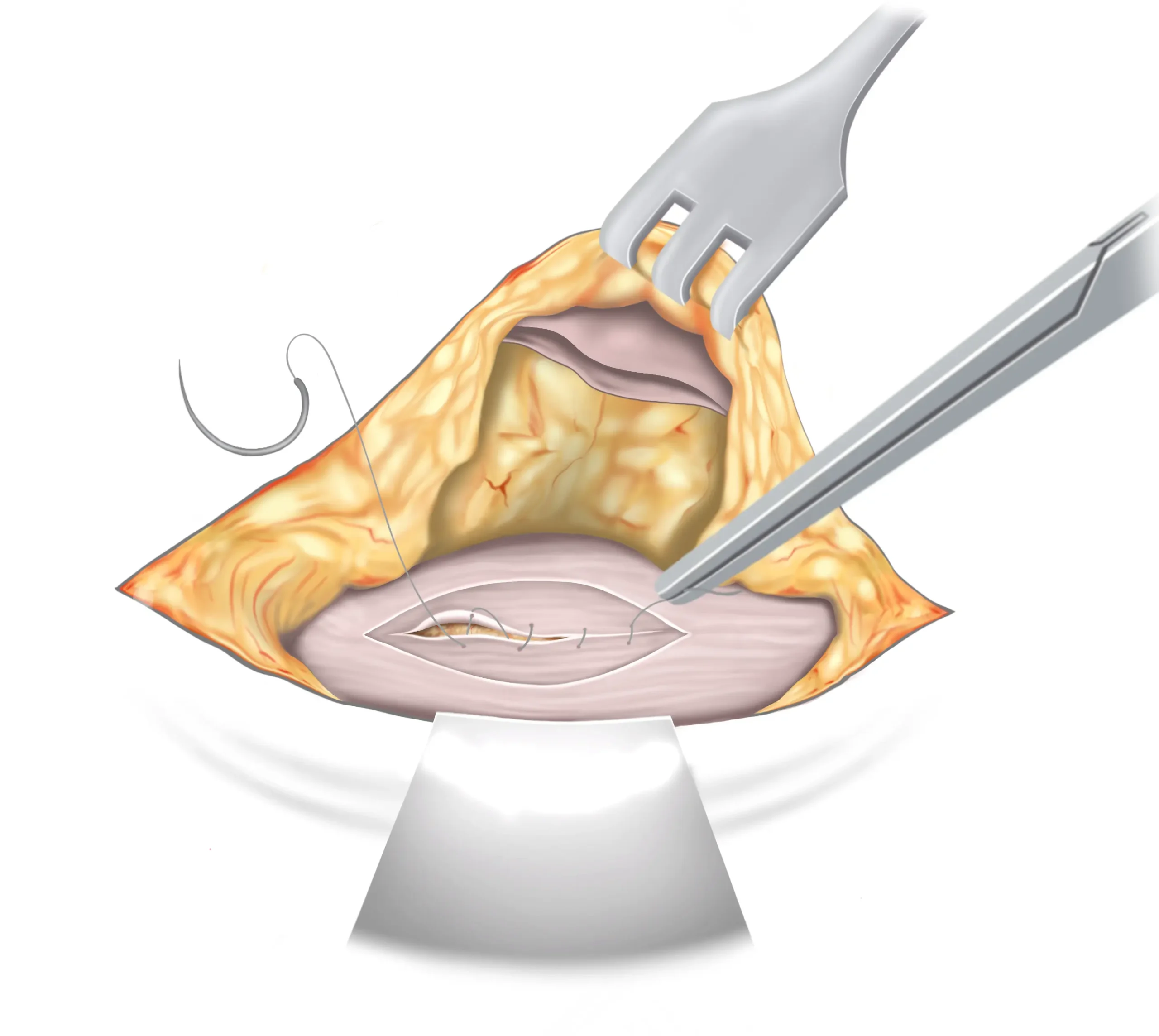
Subcutaneous fat
Umbilicus
Abdominal fascia tissue
Closure of the abdomen
The contents of the hernia sac (such as fat or intestine) are gently pushed back into the abdominal cavity, and the next step is to close the peritoneum ↓, using resorbable running sutures.
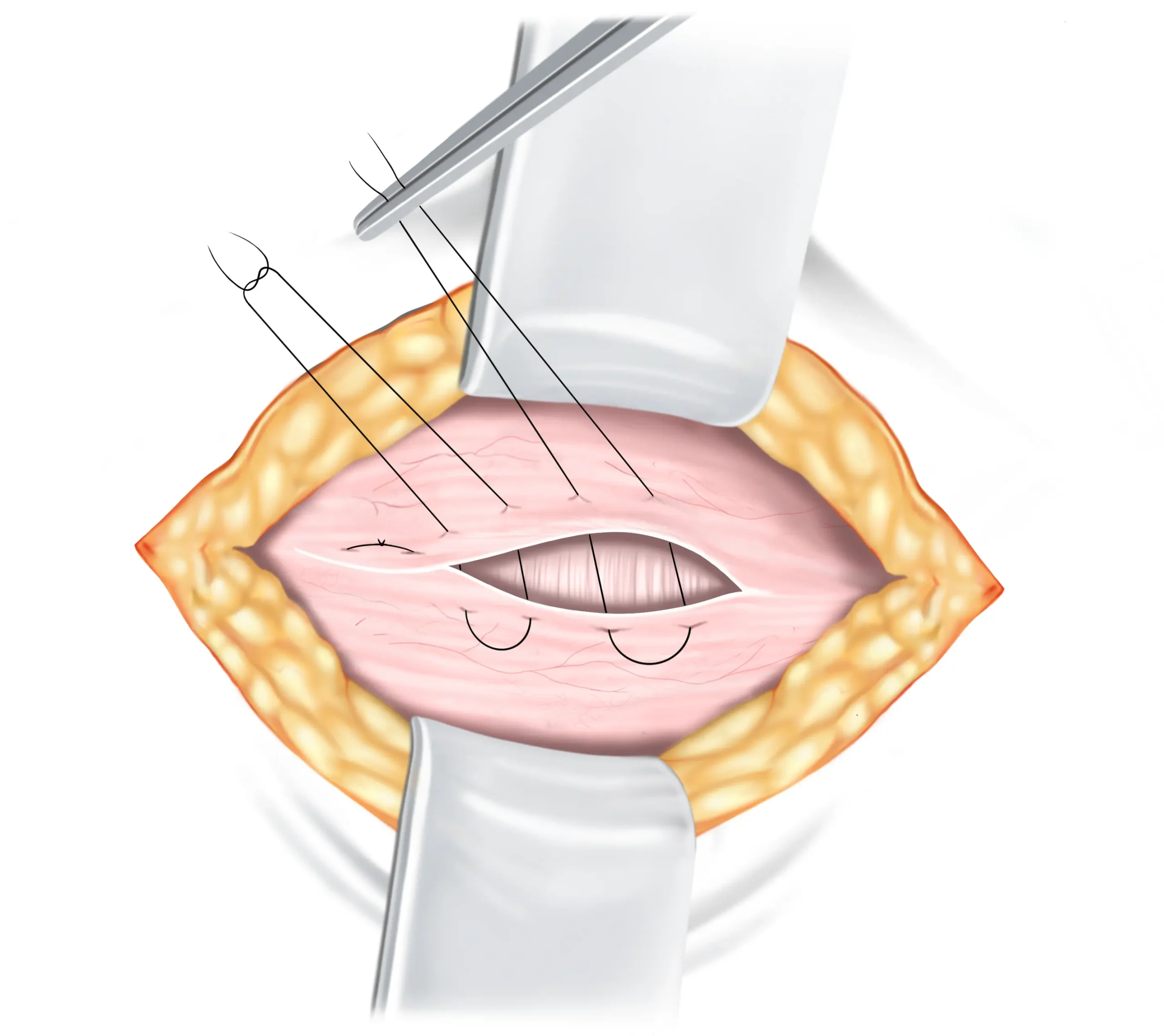
Subcutaneous fat
Abdominal fascia tissue
U-suture technique
The Mayo repair is distinguished by its “overlap” technique. The edges of the hernia defect in the abdominal wall are brought together in layers. One edge of the defect is placed over the other in a manner similar to overlapping the edges of a double-breasted coat. The first set of ‘mattress’ sutures is placed through the overlapping edges of the fascia (in a U shape) to begin closing the defect.
DETAILED EXPLANATION
The initial set of sutures is placed through both layers of the overlapping fascia using a U-shaped, or mattress, suture technique. These sutures typically involve non-absorbable or delayed absorbable materials to ensure long-term integrity of the repair. The U-shaped suture pattern serves to evenly distribute tension across the repair site and prevent suture pull-through.
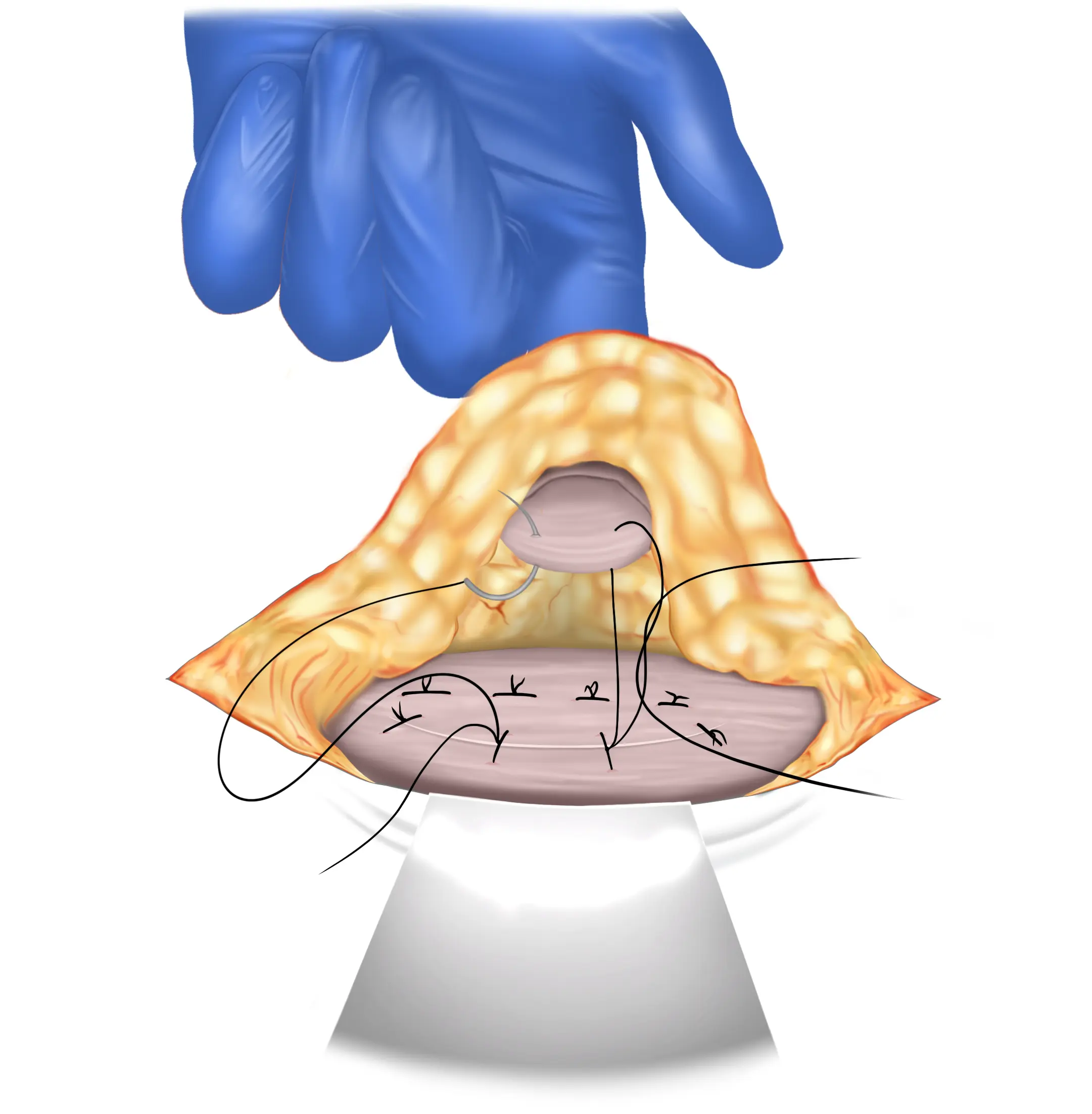
Inverted umbilicus
Overlapping flap secured
to abdominal wall
Subcutaneous fat
Finalising the repair
The overlapping fascia tissue is securely sutured to the underlying abdominal wall. The umbilicus is carefully inverted with a finger and its undersurface is fixed to the fascia tissue.

Closing the skin
After the procedure, the incision is closed using sutures that the body naturally absorbs. Therefore, there is no need for you to return for suture removal, as these sutures dissolve on their own. Local anaesthetics will also be applied, which could make the area look somewhat swollen after the operation, but this is a typical response and helps reduce pain after the operation.
DISCLAIMER
The illustrations displayed on this page have been adjusted in size—some enlarged and others reduced—to enhance understanding. They are intended to provide a simplified explanation of the operation technique and do not accurately portray the complex nature of human anatomy, nor do they convey the intricate challenges encountered during actual surgical procedures. Within the human body, everything is interlinked, making the identification of tissues, nerves, and blood vessels more challenging than what is suggested by the illustrations. Consequently, considerable experience and surgical skill are essential to accurately and effectively perform the operation technique illustrated.
Frequently asked questions
1. What makes the Mayo repair different from other hernia treatments?
The Mayo repair is a surgical technique specifically designed for repairing umbilical hernias. It is distinguished by its unique “overlap” method, where the fascial edges of the hernia defect are overlapped and sutured to provide a stronger, more durable closure. This technique contrasts with other repairs, such as mesh-based methods, by relying solely on the body’s own tissue for reinforcement.
2. Am I a good candidate for the Mayo repair?
The Mayo repair is generally recommended for patients with small to moderate-sized umbilical hernias who maintain a healthy weight. It is particularly effective in cases where the abdominal wall tissue is sufficiently strong to support the overlapping technique. This is often the case in healthy adults across a wide range of ages.
To determine whether your hernia can be repaired using the Mayo technique, we encourage you to have your case assessed by our team. We will evaluate your specific situation and recommend the best approach for your hernia repair.
3. How effective is the Mayo repair in preventing hernia recurrence?
The Mayo repair is highly effective in reducing the risk of hernia recurrence, thanks to its strong overlapping suture technique. By reinforcing the abdominal wall with double layers of fascia, the repair provides a strong and secure closure that is less likely to fail compared to simpler suture techniques. However, the success of the repair also depends on factors such as your overall health, activity level, size of the hernia and adherence to postoperative care instructions.
4. Are any nerves cut during the operation?
No major nerves are encountered or cut during the Mayo repair. The procedure focuses on the fascial layers around the umbilicus, an area where significant nerve pathways are absent. As a result, the risk of nerve damage is minimal, and nerve-related complications are not common.
5. What can I expect during recovery from a Mayo repair?
Recovery from a Mayo repair generally involves a few weeks of limited activity to allow the repair to heal properly. Patients can expect some discomfort and swelling around the incision site, which typically improves over time. Most patients are able to return to normal activities within 4-6 weeks, heavy lifting and strenuous activities should be avoided during this period.
6. What if my hernia is too large to repair with the Mayo repair?
If your hernia is too large to be effectively repaired using the Mayo repair alone, we have the option of using a Phasix resorbable mesh for extra reinforcement. This mesh provides additional support to the abdominal wall as your body heals and strengthens. Made from the same material as our resorbable sutures, the Phasix mesh gradually dissolves within 18 months, leaving no permanent foreign material in your body.
To determine whether your hernia can be repaired without mesh or if a Phasix mesh is needed, we encourage you to have your case assessed by our team. We will evaluate your specific situation and recommend the best approach for your hernia repair.
Terminology
Learn more about the hernia terms used on this page, in our simple, easy-to-understand glossary.
Abdominal fascia tissue
Abdominal fascia is a strong, connective tissue that connects your abdominal muscles to bones like the lower ribs and pelvis. It acts like a tough sheet that holds the muscles in place and helps them work better. This tissue also supports and stabilises your abdominal area, making sure everything stays in the right position.
Peritoneum
The peritoneum is a thin, protective layer inside your abdomen. It lines the abdominal wall and covers your organs, like the stomach and intestines. This layer helps your organs move smoothly and keeps them in place. It also supports blood vessels and helps protect against infection.
Phasix resorbable mesh
Phasix mesh is a resorbable surgical mesh designed to provide temporary support after hernia repair. Made from the same material as resorbable sutures, it reinforces weakened or damaged tissue, allowing the body time to heal. As the mesh gradually dissolves over 18 months, it enables your body to develop stronger, more durable scar tissue in its place. This process ensures long-term stability without leaving permanent foreign material in your body.
Hernia sac
A hernia sac is a delicate, pouch-like structure that develops when a section of an organ or fatty tissue pushes through a vulnerable area or gap in the surrounding muscle or connecting tissue. Think of it as a small pocket that accommodates the bulging tissue. The size and location of hernia sacs can differ depending on the type of hernia.
Resorbable sutures
Resorbable sutures are designed to have a controlled rate of breakdown in your body. This means that over time, the sutures gradually dissolve and get absorbed by your body. They’re made from a substance that breaks down through a natural process called hydrolysis.
Further reading
Explore our curated selection of scientific literature for a deeper understanding of the Mayo repair for umbilical hernias.
- Biographical sketch of Dr. Henry O. Marcy (1896). Concord, N.H.
- Mayo WJ. VI. An Operation for the Radical Cure of Umbilical Hernia. Ann Surg. 1901 Aug;34(2):276-80. ↗
- Campanelli G. Umbilical hernia, epigastric hernia and diastasis recti: an open discussion. Hernia. 2021 Jun;25(3):559-560. ↗
- Schumpelick V. Does every hernia demand a mesh repair? A critical review. Hernia. 2001 Mar;5(1):5-8. ↗
